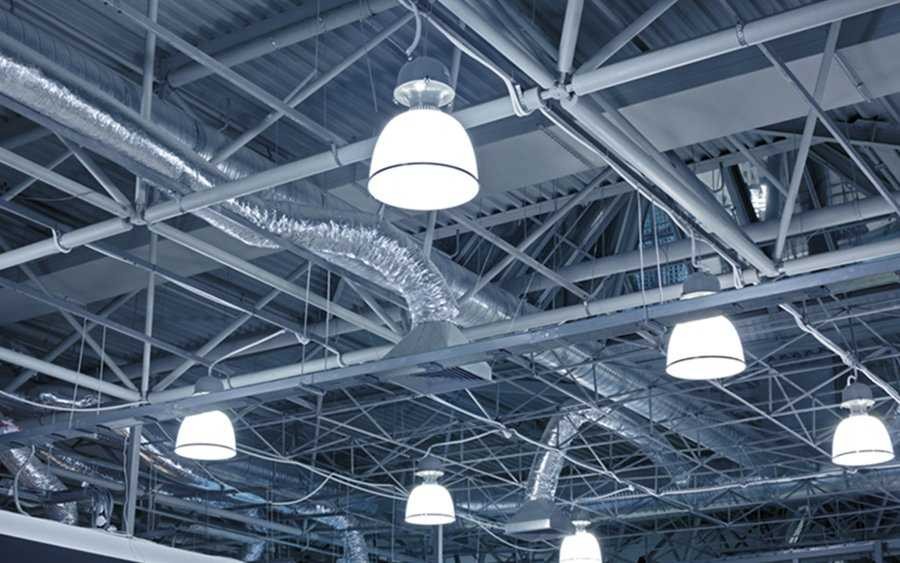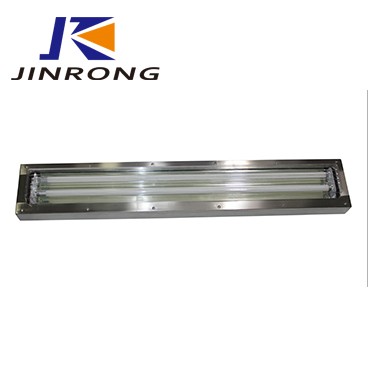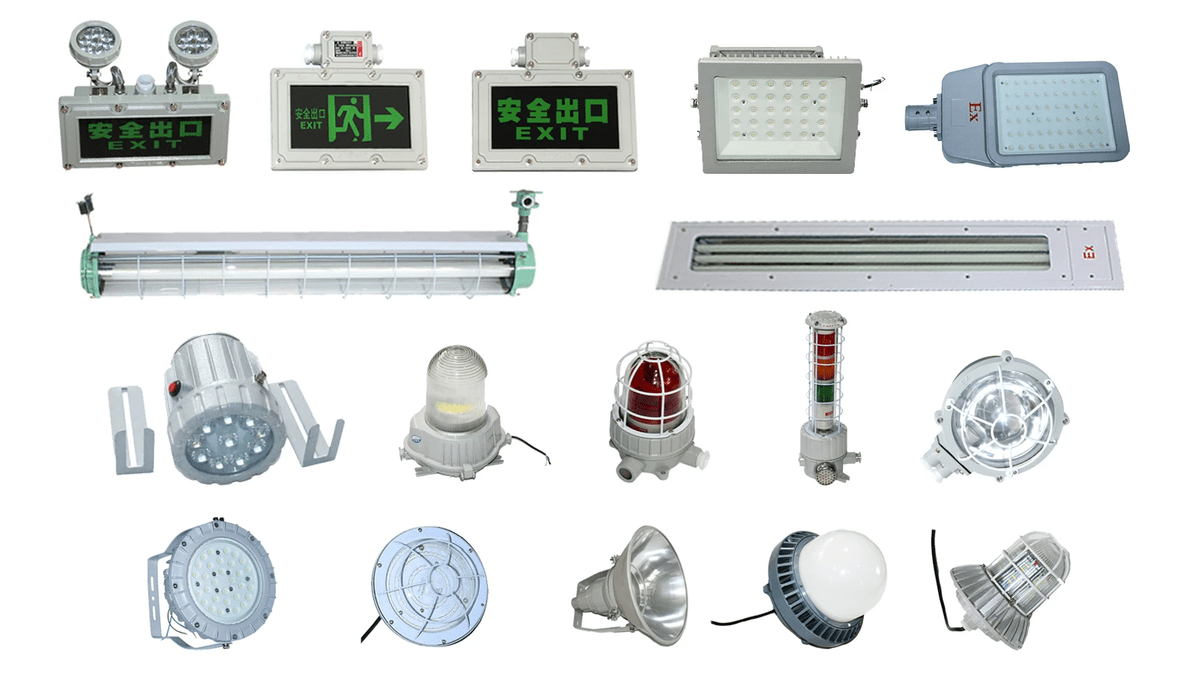Introduction

In the bustling world of food production, the significance of food factory lighting cannot be overstated. Proper illumination not only enhances operational efficiency but also plays a crucial role in ensuring safety and compliance with industry standards. Understanding what is the lighting for food production is vital for creating an environment that promotes productivity and meets regulatory requirements.
Importance of Food Factory Lighting
Food factory lighting serves as more than just a functional necessity; it is a cornerstone of effective food processing operations. Adequate lighting ensures that workers can clearly see their tasks, reducing the risk of accidents and mistakes during critical phases of food preparation. Additionally, well-designed lighting can enhance product quality by providing optimal visibility for inspection and packaging processes.
Key Lighting Types for Food Production
When considering what type of lighting is best used for a factory, several options come to mind, including LED, fluorescent, and incandescent lighting. Each type has its unique advantages and drawbacks depending on the specific needs of the facility and its processes. Selecting the right kind of food processing lighting requires an understanding of energy efficiency, light output, and maintenance costs to create an optimal working environment.
Compliance with USDA Lighting Requirements
Navigating what are the USDA lighting requirements is essential for any facility involved in food production. These regulations dictate specific standards that must be met to ensure both safety and hygiene within food prep areas. Non-compliance with these standards can lead to serious ramifications including fines or even shutdowns, making it imperative for factories to prioritize adherence to established food processing lighting requirements.
Understanding Food Factory Lighting

What is the lighting for food production?
Food factory lighting refers to the specific types of illumination used in various stages of food processing and preparation. It encompasses everything from bright overhead lights in processing areas to softer, more ambient options in packaging zones. The primary goal is to create an environment that promotes safety, efficiency, and compliance with all necessary food processing lighting requirements.
Essential features of food processing lighting
In a bustling food factory, certain features are non-negotiable when it comes to effective lighting design. First and foremost, adequate brightness is crucial; areas where intricate tasks are performed require well-distributed light to minimize shadows that could lead to accidents or errors. Additionally, using fixtures that are easy to clean helps maintain hygiene standards—an absolute must in any facility governed by USDA lighting requirements.
Benefits of effective lighting design
The advantages of implementing a thoughtful approach to food factory lighting extend far beyond mere visibility. Properly designed illumination can significantly boost worker productivity by reducing eye strain and fatigue during long hours on the job. Moreover, effective lighting plays a pivotal role in ensuring safety within food prep areas by highlighting potential hazards and improving overall operational efficiency—a win-win for both employees and management alike.
Best Types of Lighting for Factories

What type of lighting is best used for a factory?
In the realm of food production, certain types of lighting stand out as more effective than others. LED lights are often hailed as the top contender due to their longevity and energy efficiency; they provide bright illumination without generating excessive heat or consuming too much power. Fluorescent lights are another popular choice in food factories because they offer good color rendering and are relatively cost-effective, although they may not last as long as LEDs.
For areas that require high visibility, especially in food prep zones where precision is key, task lighting can be employed alongside general illumination to enhance focus on specific tasks. Ultimately, selecting the best type of lighting for a factory hinges on balancing visibility needs with energy consumption while ensuring compliance with food processing lighting requirements set by organizations like the USDA.
Comparing LED, fluorescent, and incandescent lighting
When comparing LED, fluorescent, and incandescent lighting options for food factories, it's clear that each has its pros and cons. Incandescent bulbs may provide warm light that some workers find pleasant; however, they are far less energy-efficient than their counterparts and have a shorter lifespan—making them less suitable for extensive use in industrial settings. On the other hand, fluorescent lights have been widely used due to their affordability but can flicker or hum over time—annoying traits in busy environments.
LEDs take center stage when it comes to durability and efficiency; they consume up to 75% less energy than incandescent bulbs while offering an impressive lifespan of up to 25 times longer than traditional options. Additionally, LEDs produce minimal heat output compared to incandescent bulbs—a significant factor in maintaining comfortable working conditions within a food factory environment where temperature control is vital. In summary, while all three types have their place in industrial settings, LEDs emerge as the frontrunner due to their myriad advantages.
Energy efficiency in food factory lighting
Energy efficiency plays a crucial role in modernizing food factory lighting systems while keeping operational costs down. By investing in high-efficiency LED fixtures or optimizing existing fluorescent setups with reflective surfaces or smart controls that adjust brightness based on ambient light levels can lead to substantial savings over time—both financially and environmentally. Moreover, utilizing motion sensors can help minimize unnecessary usage during off-peak hours when areas aren't actively being utilized.
Implementing energy-efficient solutions not only aids businesses financially but also aligns with sustainability goals increasingly prioritized within the industry today. As companies strive towards greener practices amid rising environmental concerns—energy-efficient choices become paramount—not just from an economic standpoint but also from ethical perspectives regarding resource consumption and waste reduction associated with outdated technologies like incandescent bulbs. Thus embracing advancements in sustainable practices through improved food factory lighting will undoubtedly yield benefits well beyond mere illumination.
Lighting Requirements for Food Prep Areas

What lighting is required in food prep areas?
Food processing lighting requirements specify that prep areas must have bright, consistent illumination to allow workers to see clearly while performing tasks such as chopping, mixing, and packaging. Typically, a minimum of 50 foot-candles (or about 540 lux) is recommended for these spaces to ensure visibility without causing eye strain. Additionally, lights should be positioned to minimize shadows and glare, which can obstruct vision and impact safety.
Ensuring safety and visibility in food production
In any food production environment, ensuring safety goes hand-in-hand with effective lighting design. Adequate light levels help reduce the likelihood of accidents by allowing workers to spot hazards quickly—think slippery floors or misplaced equipment. Moreover, well-lit environments contribute positively to worker morale and productivity; when employees can see what they’re doing clearly, they are less likely to make mistakes that could compromise product quality or safety.
Integrating natural light into food factories
While artificial lights are essential for meeting USDA lighting requirements in most scenarios, integrating natural light into food factories can provide additional benefits. Natural light not only enhances the aesthetic appeal of workspaces but also has been shown to improve mood and overall well-being among staff members. However, it’s important to balance this with effective shading solutions so that direct sunlight doesn’t create hot spots or excessive glare during peak hours.
Navigating USDA Lighting Regulations

What are the USDA lighting requirements?
The USDA lighting requirements mandate that food processing facilities must have adequate illumination levels to ensure safety and hygiene during operations. This includes using appropriate types of light fixtures that minimize shadows and provide even light distribution across work surfaces. Specifically, food factory lighting in processing areas should maintain a minimum of 50 foot-candles (fc) for general tasks, while food prep areas require even higher levels to ensure visibility for detailed work.
In addition to brightness, the USDA emphasizes that all lighting fixtures must be designed to prevent contamination. This means using shatterproof bulbs or protective covers that can withstand the rigors of a busy food production environment. Compliance with these standards not only enhances visibility but also supports overall sanitation efforts in food factories.
The role of compliance in food safety
Compliance with USDA lighting regulations plays a pivotal role in ensuring food safety throughout the production process. Properly lit environments help workers spot potential hazards, such as spills or foreign objects, reducing the risk of accidents and contamination. Moreover, effective food processing lighting requirements contribute to maintaining high hygiene standards by making it easier to clean surfaces thoroughly.
In essence, when factories adhere to these guidelines, they create safer working conditions which ultimately lead to better quality products. Ensuring adequate visibility allows employees to perform their tasks more efficiently and accurately—an essential factor in maintaining product integrity from production through packaging. Thus, compliance isn't just about following rules; it's about fostering a culture of safety within the facility.
Consequences of non-compliance with lighting standards
Failing to meet USDA lighting requirements can lead to serious consequences for food manufacturers, ranging from fines to complete shutdowns until issues are resolved. Non-compliance can result in increased risks of contamination due to poor visibility or inadequate cleaning practices—both detrimental outcomes in any food processing environment. Additionally, regular inspections may reveal deficiencies that could tarnish a company's reputation and trustworthiness among consumers.
Moreover, inadequate illumination can hinder productivity as employees struggle with visibility issues during their shifts—leading not only to frustration but also costly mistakes on the production line. In today's competitive market where quality is paramount, ensuring proper food factory lighting is not just an option; it's an imperative for success and sustainability within the industry.
Innovations in Food Factory Lighting

In recent years, the landscape of food factory lighting has undergone remarkable transformations, driven by technological advancements and a growing emphasis on efficiency and safety. With the increasing complexity of food production processes, understanding what is the lighting for food production becomes crucial. Innovative solutions not only enhance visibility but also align with stringent food processing lighting requirements to ensure compliance with industry standards.
Advances in lighting fixture manufacturing
The manufacturing of lighting fixtures has seen significant strides towards improving energy efficiency and durability, essential for food factory environments. Modern materials and designs are now tailored to withstand the unique challenges posed by food processing settings, such as humidity and temperature fluctuations. Furthermore, these advancements have led to fixtures that provide consistent illumination while minimizing maintenance needs—an essential factor when considering what type of lighting is best used for a factory.
Innovative technologies like modular LED systems are being embraced within factories due to their flexibility and adaptability to various production areas. These fixtures can be customized based on specific tasks or zones within a facility while ensuring compliance with USDA lighting requirements. By employing advanced manufacturing techniques, companies can achieve high-quality light output that meets both aesthetic and functional needs in food prep areas.
Smart lighting solutions for food processing
The advent of smart technology has revolutionized how we approach food factory lighting, offering dynamic solutions that respond to real-time conditions. Smart sensors can adjust brightness levels based on occupancy or natural light availability, ensuring optimal visibility without wasting energy—crucial when discussing energy efficiency in food factory lighting. These systems not only enhance operational effectiveness but also contribute significantly to reducing overhead costs.
Moreover, integrating smart controls allows facilities to monitor energy consumption patterns closely, facilitating better management of resources in line with USDA lighting requirements. This level of control ensures that all areas receive adequate illumination according to the specific needs dictated by their function—be it preparation zones or storage spaces where what is required in food prep areas may vary greatly. As such innovations continue to emerge, they promise a future where factories operate more sustainably while maintaining high standards of safety.
The future of food factory lighting
Looking ahead, the future of food factory lighting appears bright—pun intended! With ongoing research into sustainable materials and energy-efficient technologies, we can expect even more advanced solutions designed specifically for the complexities of modern food production environments. Emerging trends indicate a shift towards integrated systems combining artificial intelligence (AI) with IoT capabilities; this could redefine how we approach not only illumination but also overall facility management.
As industries strive for greater compliance with evolving regulations regarding health and safety standards—including stringent USDA guidelines—the role of innovative lighting will become increasingly critical. The ability to adapt quickly while meeting rigorous food processing lighting requirements will be vital for manufacturers aiming for long-term success in a competitive marketplace. Ultimately, embracing these innovations will lead us toward smarter factories where productivity flourishes alongside safety and sustainability.
Conclusion

In the bustling world of food production, the significance of food factory lighting cannot be overstated. Proper lighting not only enhances visibility but also impacts efficiency and safety in food processing environments. As we’ve explored, understanding what is the lighting for food production is crucial for meeting industry standards and ensuring a smooth workflow.
Maximizing Efficiency with Proper Lighting
Maximizing efficiency in any factory setting hinges on selecting the right type of lighting. What type of lighting is best used for a factory? The answer often lies in energy-efficient options like LED lights, which provide bright illumination while reducing electricity costs significantly. By integrating effective food factory lighting solutions, facilities can streamline operations and minimize downtime due to poor visibility.
Moreover, well-designed lighting systems can enhance worker productivity by creating a more comfortable working environment. With optimal brightness levels tailored to specific tasks, employees can perform their duties more effectively and with fewer errors. Ultimately, investing in quality food processing lighting requirements leads to better outcomes across the board—from product quality to employee satisfaction.
Ensuring Safety in Food Production Areas
Ensuring safety in food production areas begins with appropriate illumination that meets specific requirements. What lighting is required in food prep areas? Adequate brightness not only allows workers to see what they’re doing but also helps identify potential hazards before they become accidents. For instance, proper light levels can illuminate spills or obstructions that could lead to slips or falls.
Additionally, compliance with USDA lighting requirements plays a vital role in maintaining safety standards within these facilities. By adhering to these regulations, companies can avoid costly penalties while ensuring their processes are safe for both employees and consumers alike. In summary, effective food factory lighting is foundational for creating a secure work environment where everyone can thrive.
Future Trends in Food Factory Lighting
Looking ahead, innovations in lighting fixture manufacturing promise exciting developments for the future of food factory lighting. Smart technology integration will likely revolutionize how we approach illumination within production spaces by allowing real-time adjustments based on activity levels or natural light availability. This adaptability ensures that energy consumption remains efficient while providing optimal visibility at all times.
Furthermore, advancements such as smart sensors and automated systems will enhance overall operational efficiency by reducing manual intervention needed for adjusting lights throughout various shifts or tasks. As we embrace these future trends in food processing lighting requirements, we’ll witness a transformation that not only improves productivity but also supports sustainability goals across the industry.

